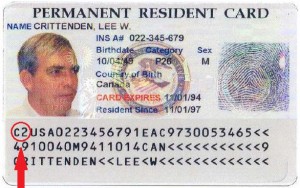 Permanent residents, also known as green card holders, must generally maintain their permanent home in the United States. There is an exception for a permanent resident in commuter status.
Permanent residents, also known as green card holders, must generally maintain their permanent home in the United States. There is an exception for a permanent resident in commuter status.
Although permanent residents can travel abroad for short-term purposes, they must maintain residence and ties to the United States, or risk abandoning their resident status.
Permanent Resident in Commuter Status
Permanent resident in commuter status is an exception made available to some residents of Canada and Mexico. “Commuter status” allows these individuals to live in Canada or Mexico, while working in the United States, without risking abandoning their resident status. The Code of Federal Regulations at 8 CFR §211.5 describes the details.
Mistakes on your I-90 application can cause costly delays or a denial.
Prepare your I-90 correctly and affordably with CitizenPath. The attorney-reviewed software guides you through the application and provides help to answer questions like this one. And personalized filing instructions help you to file your application today knowing that you did everything right! No credit card or signup required to get started. Try it before you buy it >>Limitation of Rights for Permanent Resident in Commuter Status
A permanent resident in commuter status has numerous limitations compared to a typical lawful permanent resident of the United States. A green card holder with commuter status:
- Is not eligible to apply for U.S. citizenship until he/she converts the commuter status to a standard lawful permanent resident status, and then waits the appropriate time frame (3 or 5 years);
- Cannot sponsor family members for a green card unless he/she moves to the U.S. and then processes paperwork for the family. To sponsor a family member who was not in existence when the green card was secured (such as a new spouse or step child), this may take several years;
- Must appear at a port-of-entry every six months to complete Form I-178, and provide proof of both continuous employment in the United States, and residence in Canada or Mexico;
- Can be extended only if the individual continues to work in the U.S. and can prove that he/she has worked in the U.S. for at least 90 days during the last year;
- Cannot take international assignments without risking the loss of green card status; and
- May not be entitled to all of the same protections as a regular green card holder. For example, a commuter is not entitled to a formal hearing before an Immigration Judge to determine whether he/she is removable/inadmissible to the U.S.
What does a commuter green card look like?

A green card for a permanent resident in commuter status looks almost identical to a standard green card. However, the commuter green card will carry a different code. On the front of most green cards, C1 is for a regular permanent resident and C2 is for a commuter. You may find this code on the back of newer green cards.
RECOMMENDED: How to Read a Green Card
How to Switch from Commuter Status to a Standard Permanent Resident
By making the decision to become a permanent resident of the United States, you are making a commitment to live in the U.S. and begin building ties in this country. Once you move your residence to the United States, you will file Form I-90, Application to Replace Permanent Resident Card. In Part 2 of the I-90 application, you will select “I am a commuter who is taking up actual residence in the United States” as your application type.
